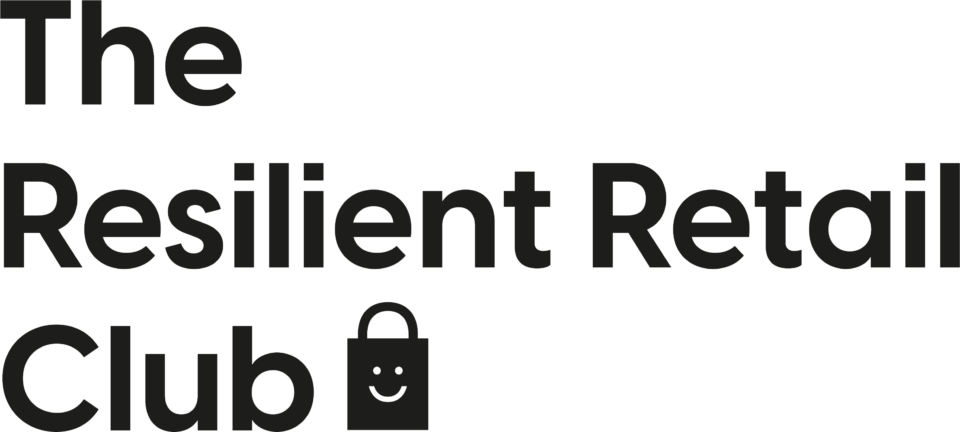This article was written in collaboration with Therese Oertenblad from Small Business Collaborative. Find out more about Therese right here.
The marketplace model is one that has been growing in popularity over the last few years, with many new businesses springing up to service a wide variety of customers. So it was a natural progression that many third-party wholesale marketplaces have started springing up as well.
The benefits of these marketplaces are many. They offer a place for retailers to discover new brands and place orders with the confidence that the businesses listed on the site will deliver. They also offer credit terms and, in some cases, free returns, which for a small business managing wholesale directly can be difficult to do.
With trade shows being cancelled or moving online, wholesale marketplaces have stepped into a gap in the market. But how do these markets work, and should you be taking advantage of them?
How Third-Party Wholesale Marketplaces work
One of the most daunting aspects of these marketplaces for small businesses who want to make the most of them is navigating how the different models work. Let’s look at two of the marketplaces for more details.
Faire.com
Faire.com is a US site that set out to create a marketplace that took all the risk out of bringing on new products for retailers. They now have over 60,000 retailers and offer retailers 60 days credit and free returns at no risk to the seller.
Jana Starcevic, founder of The Completist (@the.completist) said that the joining process at Faire.com is very simple as they upload everything from your catalogue, using photos you provide. In under a year she’s gained 78 new stockists in the US.
She recommends to only join wholesale marketplaces that don’t charge an upfront fee to list your products, and if they approach you, to take them up on your offer, as waiting for them to approve you can take time if you apply yourself.
Creoate
In the UK, Creoate recently launched a similar concept. Ashley Horn, founder of Creoate says; “After running my own storefront and working with hundreds of young brands, I discovered a gap in the industry and immediately took the chance to step in. Our mission is to empower the independent retail community so they can continue doing what they do best – sourcing beautiful and innovative products for consumers to enjoy.”
As a young business (Creoate is less than a year old), one of their biggest wins is that they successfully created an International community with buyers from the UK, Europe and the US using their platform.
Emily Canino from Doodle Moo says the process of joining Creoate was very simple. They created the listings for her using her wholesale catalogue so all she had to do was to approve the listings and ask for a few tweaks.
In her first 3 weeks on the platform she had 2 orders from stockists she might not have found had she not been on the platform. Emily thinks Creoate is ideal for someone like her who doesn’t have a lot of time to actively look for retailers.
Although this post covers Faire.com and Creoate, there are many other marketplaces out there, with more springing up all the time. For a full list, get our downloadable guide to thirteen 3rd party marketplaces, as part of the Scale Your Business toolkit, right here.
What to consider when selling on a wholesale marketplace
With so many marketplaces springing up and the ability to reach retailers you might otherwise not have been able to access, joining a wholesale marketplace might seem like the obvious choice for your business. However, there are a few points to consider before deciding how to move forward.
- Pricing – the amount of commission taken by each marketplace varies, but you will be making less profit by selling through a third party marketplace, something that you need to consider carefully. Make sure you have a firm understanding of how much profit you make on every sale at wholesale, and if there is room in your margins to allow the marketplace to take a cut as well.
- Some marketplaces are focused on the US or European markets, so you will need to price your products carefully when selling in other currencies. Make sure you price so that you will still be making a profit, even with currency fluctuations taken into account.
- Just like selling directly to a customer on a third-party marketplace like Etsy, remember that by selling through a third party wholesale marketplace, you will not own the relationship with your retail customers, the marketplace will own it. And if the marketplace closed, what would happen to those relationships then? Speaking of Etsy, they opened a wholesale market, only to close it in 2018 after poor engagement. So it’s well worth bearing in mind that you don’t want all your wholesale eggs in someone else’s basket.
- Which marketplaces are the best fit? – While it can be tempting to think about joining every available marketplace to get your products out there to as many people as possible, it is wise to take your time and carefully select who you want to be partnering with. Think about who your ideal customer is (and your ideal stockist), and whether the other brands already on the marketplace look like they would also serve that customer. Even if it’s not an upfront cost to join a marketplace, it’s an upfront time investment and it’s important to not spread yourself too thin.
5 Steps to succeed on a wholesale marketplace
While wholesale marketplaces are an exciting new opportunity, the keys for success are not dissimilar to those for direct to customer marketplaces. Here are a few thoughts to help you participate successfully.
- Set your goals so you know what success looks like. Before you start selling, ask yourself, what kind of revenue do you want to be generating in order to make your time investment worthwhile? Set yourself a clear target so you can measure whether or not you are happy with the results.
- As with all online selling, high-quality images are essential to give your products a polished look. In addition, polished imagery helps give retailers confidence that they are working with a professional supplier.
- Just like direct to customer marketplaces, the algorithm is very important. The more you sell, the more you will be shown to potential stockists, so it’s important to gain momentum.
- Another similarity to other marketplaces is the need to offer great communication and customer service to your retailers so that you can build your reputation as a good company to deal with.
- While third party marketplaces are a welcome addition to the wholesale scene, they are not a substitute for doing your own research and outreach. Why not consider joining them to reach stockists you would otherwise find it difficult to access, while still finding your own opportunities?
How marketplaces fit in the bigger picture
These new creative platforms are clearly filling a gap in the market. Therese says: “I find the marketplaces very intriguing and I can see how they can really help both retailers and brand owners but I think it would be very sad if we didn’t keep on building relationships between makers, small business owners, and retailers.
For me, part of what I love about the industry is how we’re all working together so I would urge any brand owners or retailers reading this to keep in touch with each other and not solely rely on a third-party marketplace. If you nurture those relationships, they are yours to keep.
I’m sure you have all heard that in addition to having followers on Instagram it’s important to still keep your own mailing list, it’s the same with your wholesale, you want to make sure you “own” those relationships, whether you are a retailer or seller.”
Where the marketplaces can help is with driving bigger volumes of orders which can help drive your overall profitability. Catherine says: “The end-game of wholesale is really all about driving more volume through your business which in turn allows you to get lower unit costs per item and improves your overall profitability. These third-party marketplaces are really beneficial for allowing you to widen your reach substantially and potentially widen your retailer base.
What you need to be really careful with is knowing your numbers – make sure that you are making a profit on each order, even after you have paid commission to the marketplace, converted your prices into different currencies, and looked into your shipping, packaging, and fulfilment costs.”
These new and innovative platforms can offer a great alternative to trade shows when you’re starting out with wholesale. However, neither marketplaces nor your own outreach or tradeshows need to rule each other out. In fact, they work best in synergy should you have the budget and time for it.









